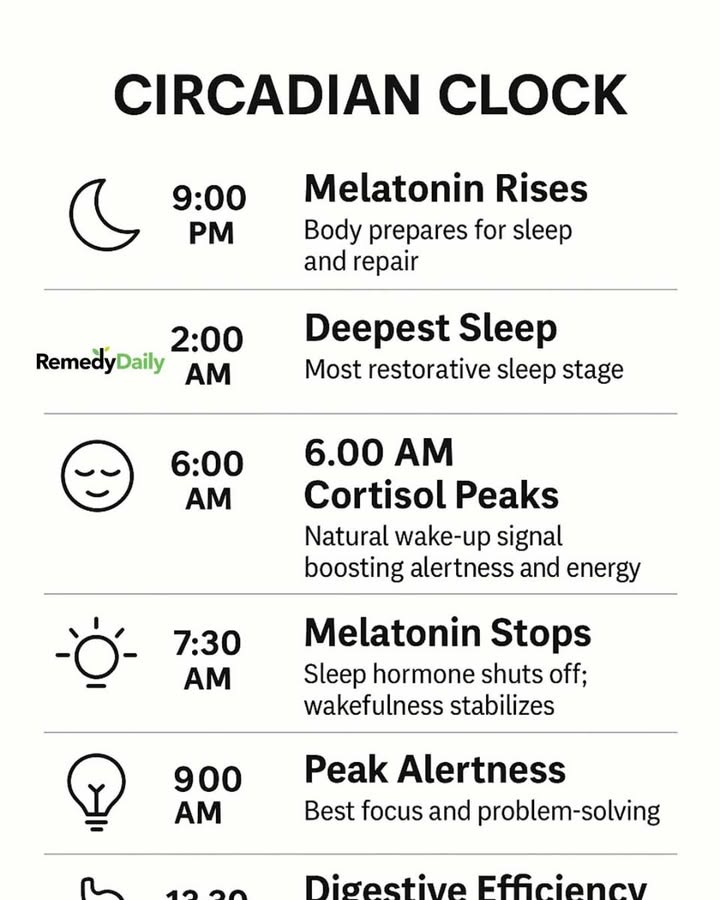
Timeline of how your circadian clock works &why
7:30 AM – Melatonin Stops
Melatonin, the hormone that promotes sleepiness, begins to shut off about an hour or so after you wake. This decline is what helps you feel fully awake and ready to start your day. It’s why sluggishness tends to fade once the morning light hits and your body chemistry shifts gears.
This is a good time to engage in activities that require concentration but not yet peak focus. A calm morning routine, light exercise, or even a short walk outside helps solidify wakefulness and sets a positive tone for the day.
9:00 AM – Peak Alertness
By mid-morning, mental sharpness and alertness are at their highest. The brain is primed for deep focus, problem-solving, and productivity. This window is often considered the “golden hours” for mental work—perfect for tackling tasks that require creativity or analytical thinking.
If possible, schedule important meetings, study sessions, or high-priority projects during this time. You’ll likely find tasks that feel draining later in the day flow much more easily now.
12:00 PM – Digestive Efficiency Peaks
Midday is when your digestive system is at its most efficient. Enzymes and gastric activity are heightened, making it easier for the body to handle larger meals without sluggishness. This is why many cultures traditionally place their biggest meal at lunch rather than dinner.
Choosing nutrient-dense foods at this time supports steady energy for the afternoon. Whole grains, lean proteins, and vegetables fuel both body and brain, avoiding the mid-afternoon crash that often follows heavier, less balanced meals.
3:30 PM – Fastest Reaction Time
In the mid-afternoon, the nervous system sharpens, giving you your fastest reaction times. This makes it a great window for activities that require coordination, quick thinking, or fine motor skills. Sports, driving, or even strategic games benefit from this natural boost.
If you’re struggling with post-lunch drowsiness, leaning into activities that involve movement or problem-solving can re-energize you. It’s not the best time for heavy lifting or endurance training, but for reaction-based tasks, it’s your sweet spot.
5:00 PM – Peak Strength & Cardiovascular Function
Late afternoon into early evening is when physical performance typically peaks. Studies show muscle strength, flexibility, and cardiovascular efficiency are all heightened at this time, making it ideal for exercise. You’ll likely lift heavier, run faster, and recover more efficiently.